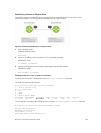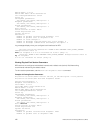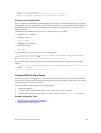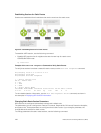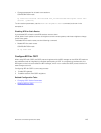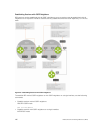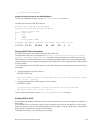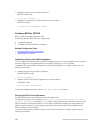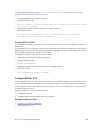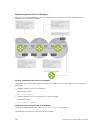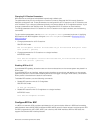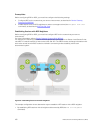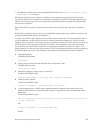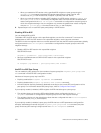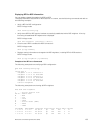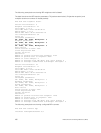
To view session parameters, use the show bfd neighbors detail command, as shown in the
example in Displaying BFD for BGP Information.
• Change parameters for all OSPFv3 sessions.
ROUTER-OSPFv3 mode
bfd all-neighbors interval milliseconds min_rx milliseconds multiplier value
role [active | passive]
• Change parameters for OSPFv3 sessions on a single interface.
INTERFACE mode
ipv6 ospf bfd all-neighbors interval milliseconds min_rx milliseconds
multiplier value role [active | passive]
Disabling BFD for OSPFv3
If you disable BFD globally, all sessions are torn down and sessions on the remote system are placed in a
Down state.
If you disable BFD on an interface, sessions on the interface are torn down and sessions on the remote
system are placed in a Down state. Disabling BFD does not trigger a change in BFD clients; a final Admin
Down packet is sent before the session is terminated.
To disable BFD sessions, use the following commands.
• Disable BFD sessions with all OSPFv3 neighbors.
ROUTER-OSPFv3 mode
no bfd all-neighbors
• Disable BFD sessions with OSPFv3 neighbors on a single interface.
INTERFACE mode
ipv6 ospf bfd all-neighbors disable
Configure BFD for IS-IS
When using BFD with IS-IS, the IS-IS protocol registers with the BFD manager on the RPM. BFD sessions
are then established with all neighboring interfaces participating in IS-IS. If a neighboring interface fails,
the BFD agent on the line card notifies the BFD manager, which in turn notifies the IS-IS protocol that a
link state change occurred.
Configuring BFD for IS-IS is a two-step process:
1. Enable BFD globally.
2. Establish sessions for all or particular IS-IS neighbors.
Related Configuration Tasks
• Changing IS-IS Session Parameters
• Disabling BFD for IS-IS
Bidirectional Forwarding Detection (BFD)
149



